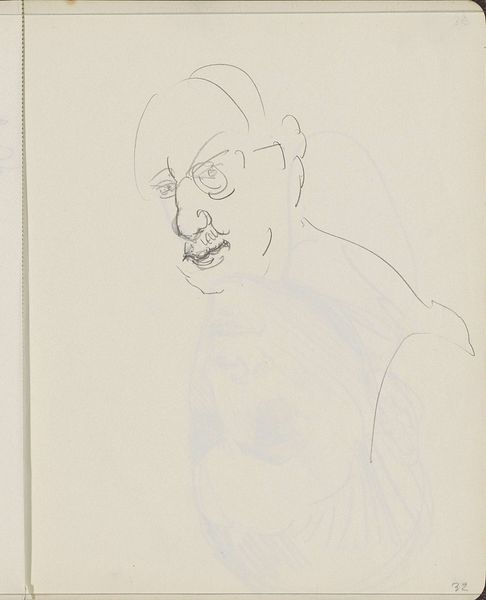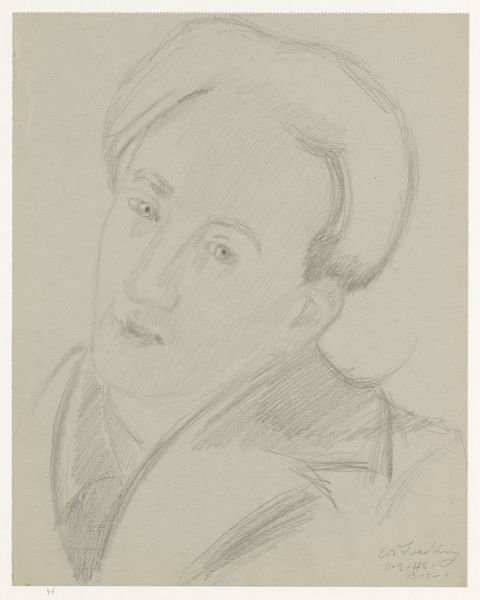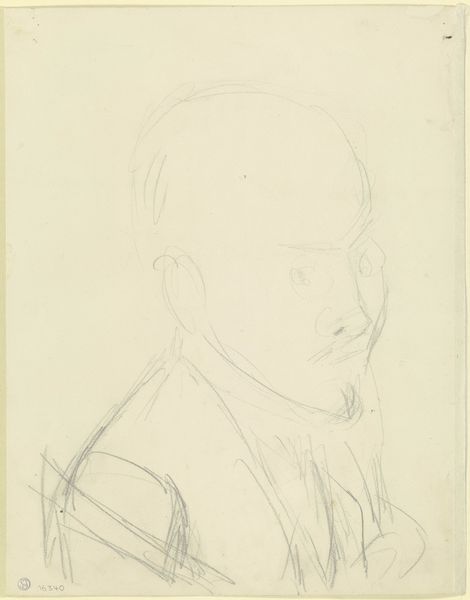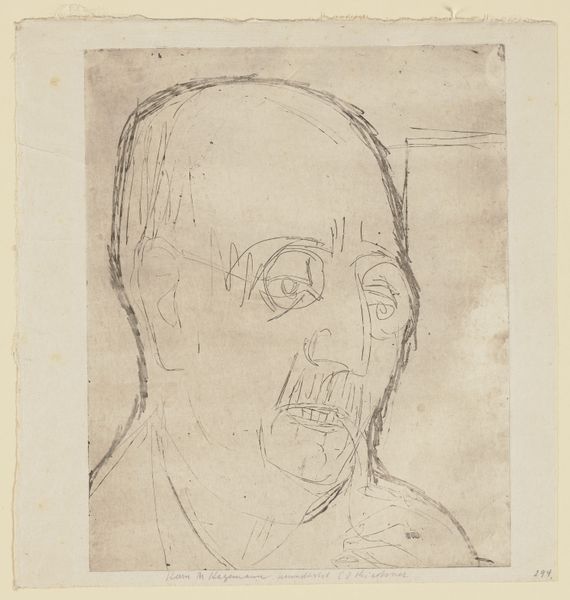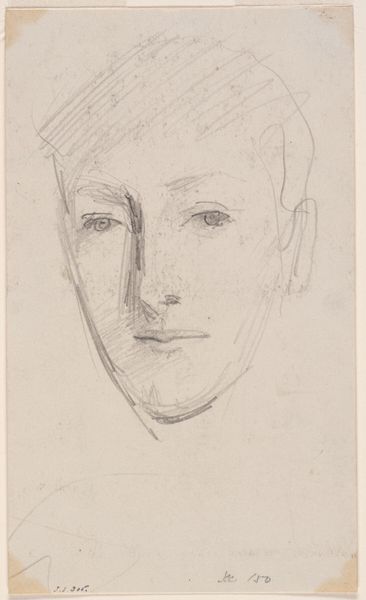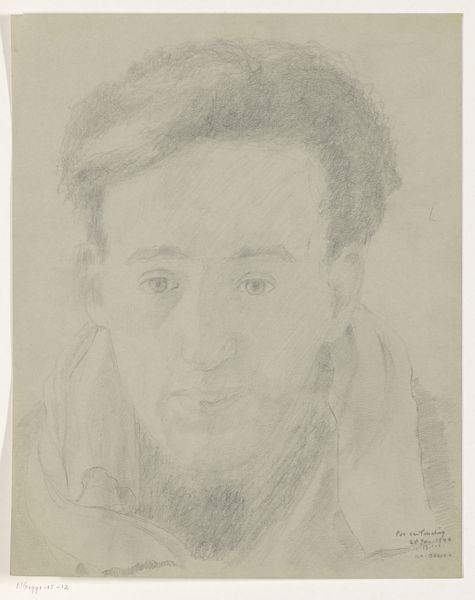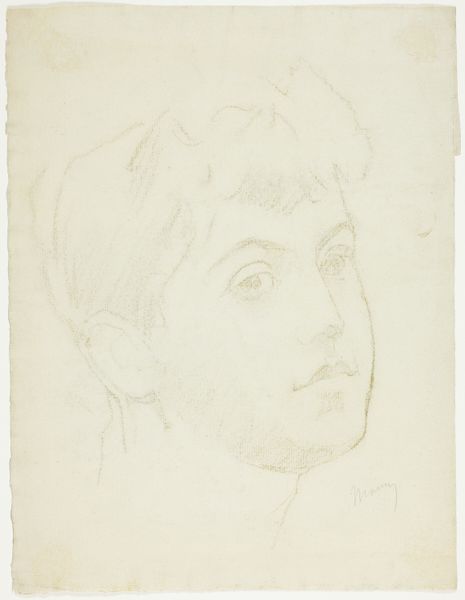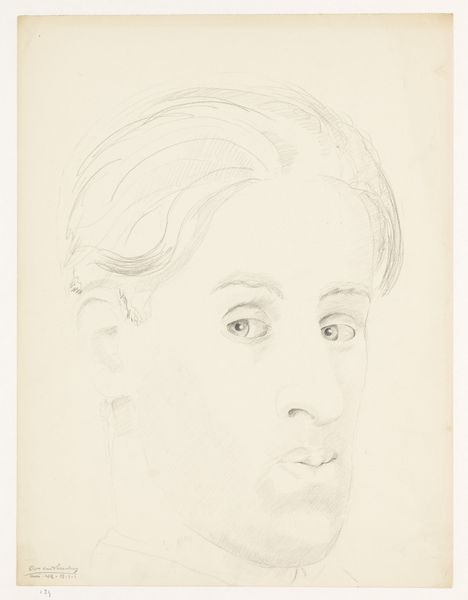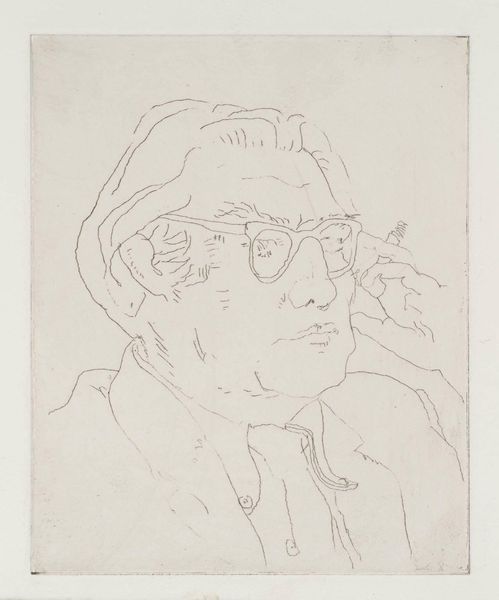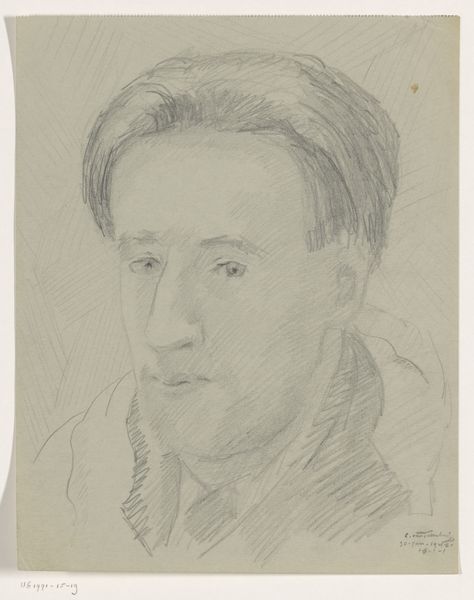
drawing, pencil
#
portrait
#
drawing
#
pencil drawing
#
pencil
#
portrait drawing
#
realism
Dimensions: overall: 22.5 x 16.7 cm (8 7/8 x 6 9/16 in.)
Copyright: National Gallery of Art: CC0 1.0
Curator: This pencil drawing, dating from around 1935, is Victor Hammer’s portrait of Dr. Viktor von Geramb. It’s rendered with a remarkable lightness of touch. Editor: My first impression is of a kind of hesitant vulnerability. The delicate lines give it an unfinished quality, as if the subject is caught in a moment of contemplation or unease. Curator: Hammer’s choice of pencil is key here. It allowed him to work with immediacy and to build up tone gradually. Pencil, often seen as preparatory, becomes the finished article here, challenging conventional ideas of what constitutes a finalized artwork. One wonders about Hammer’s supply and where he sourced such delicate pencils at that time. Editor: I’m struck by the prominence of the eyeglasses. The lenses are dark circles, drawing immediate focus. Given that spectacles often serve as symbols of intellect and insight, I wonder what they communicate about Dr. von Geramb? He looks out from behind them rather meekly, and they feel a little obscuring. Curator: Considering the political context of the 1930s, the act of drawing itself becomes a form of labor, a quiet act of resistance, perhaps? Or at the very least, it is a quiet way of occupying oneself at that time. How does this fit in with our understanding of the artistic landscape in pre-war Austria? Editor: I think his mild gaze belies a strong academic inclination, given the nature of Geramb's life’s work. He was fascinated by folk culture, by customs and traditions – he saw the cultural memory of rural communities under threat from the spread of technology. So his slightly downcast look may reflect that anxiety. Curator: It is fascinating how Hammer uses an ordinary material like pencil to depict not just a likeness but an aura around the subject. There’s an intimacy inherent in portraiture, amplified by the very directness and simplicity of the medium. The cheapness of this material in turn makes me wonder what role accessibility plays in portraiture as a format. Editor: Looking at it again, I notice an almost ghostly quality to the rendering, adding to this sense of an almost fading world Geramb dedicated his life to studying. It speaks volumes about the sitter's personal investment. Curator: A fitting end indeed, given this man was drawn using the common material of graphite and pencil. I hadn’t thought about the sense of passing you just highlighted until this moment. Editor: It all points to the lasting, yet fragile power of images and the symbolism they embody.
Comments
No comments
Be the first to comment and join the conversation on the ultimate creative platform.
